Active fishing gears
Fishing fears such as surrounding nets, seine, nets, trawls, dredges, pole and line, jigging lines, lift nets and falling gear that are actively operated, comes under this category. |
|
Surrounding nets
Surrounding nets are roughly rectangular walls of netting rigged with floats and sinkers, which after detection of the presence of fish are cast to encircle the fish school. Surrounding nets are generally operated in the surface layers. |
- Purse seines
Purse seines are the predominant type of surrounding nets, in which the bottom of the net is closed after encircling the fish school, by a purse line that prevent fish from escaping downwards by diving.
Based on the number of vessels used in operation there are one-boat and two-boat purse seines.
Based on the target species, there are anchovy purse seines, sardine purse seine, mackerel purse seine, cod purse seine and tuna purse seine.
Based on the scale of operations there are small, medium and large purse seines.
Surrounding nets without purse lines like lampara net are operated in small scale sector
|
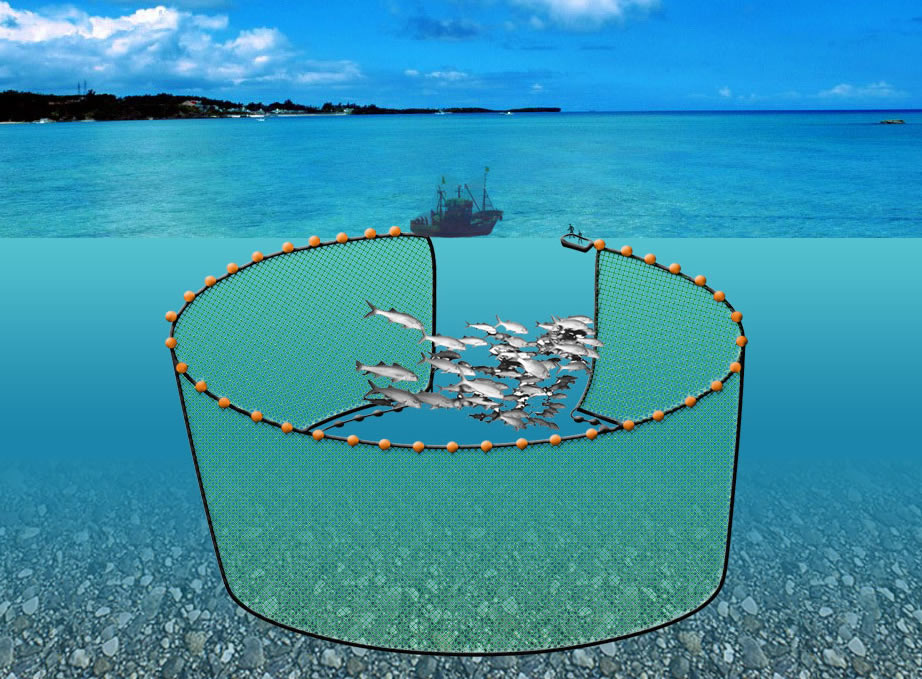
Purse Seines |
- Seine nets
Seine net is along wall of netting with or without a bag, supported by float and sinkers, which are operated by surrounding areas of water with potential catch.
The net is operated by ropes attached to the end of wings which are used for hauling and for herding the fish. They are usually operated in the coastal or shallow waters where bottom and / or surface acts as natural barriers.
Seines which are operated from the boat are called boat seines. Danish seine is a well known boat seine. Danish seine operated on the bottom from a single boat, consists of a bag and wings attached to long ropes set in water so as to cover a large area in order to herd the fishes there into the net mouth.
Seines operated from the shore are called shore seine or beach seine. An example is Rampani net operated in south-west India.
|
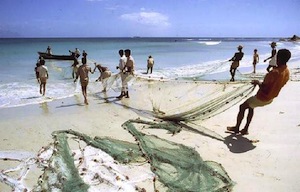
Beach Seine |
- Trawls
Trawl nets are conical bag nets with two wings and a codend where catch is concentrated, operated by towing from one or two boats.
Based on the position in water column where they are operated, trawls are classified into bottom trawl and midwater or pelagic trawl. Based on the opening of the mouth they are grouped into beam trawl where mouth is kept open by means of a rigid wooden or steel beam; otter trawls where otter boards are used for horizontal spread of trawl mouth.
Depending on the number of boats used there are one-boat trawl and two-boat trawl or pair trawl or bull trawl. Based on trawl system where two nets are operated from a single vessel, there are double rig trawl system where two nets are operated from outrigger booms, triple trawl system where three nets are operated at the same time and quad rig system where two nets each are operated from two out rigger booms.
|
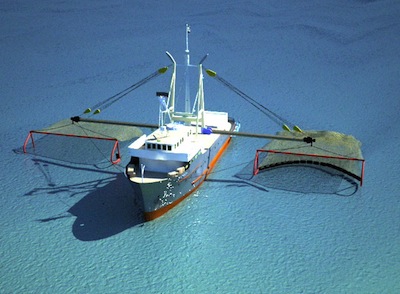
Beam Trawls |
- Dredges
Dredges are dragged gear, with a oblong iron frame with an attached bag net, operated on the bottom usually for collecting shellfish. They are either operated from boat or, in shallow waters, by hand
|
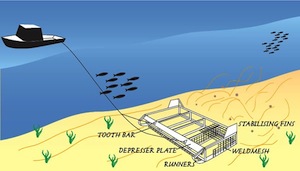 |
- Hooks and lines (actively operated)
Fish are enticed by edible or artificial bait or lurne which simulates the appearance and movement of the natural prey, and are finally held by the hook concealed in the bait or lure.
The hook is connected to a line or snood. The fish is also held by the piercing action of hooks or jigs passing nearby.
Important types of hooks and lines which are actively operated are pole and line which are worked either manually or mechanically, jig lines which are operated either manually or by powered jigging machines for squids attracted by light and troll lines operated for predatory fishes with hooks having natural or artificial baits, trailing behind the running vessel usually in the surface layers
|
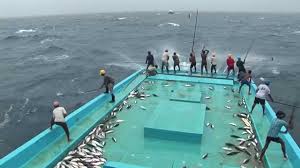 |
- Lift nets
Lift net consists of horizontal netting panel or a cone-shaped bag with the mouth facing upwards, which are submerged and lifted either manually or mechanically to filter the fish in the overlying water column.
There are shore operated lift nets, which are operated from stationary installations along the shore and boat-operated lift nets which are operated from one or several boats.
|
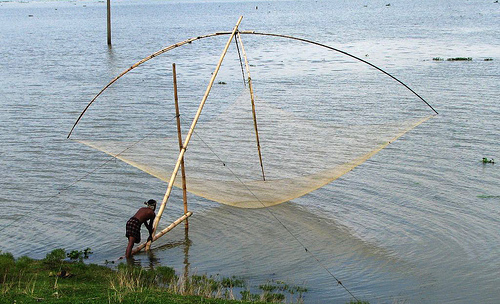 |
Updated on Feb 2015
|

